FREE BOTTLE OFFER
100% Money Back Guarantee
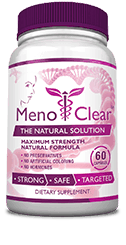
1 to 6 Month
SUPPLY
SAVE
OVER
$100
Limited Time Offer
Order Today!

We're so confident that MenoClear™ will work for you, that we are pleased to offer a 60 day Risk Free Money Back Guarantee!


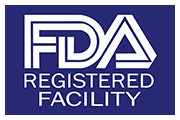
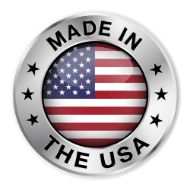
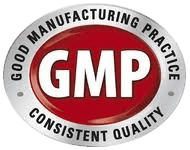
Why is MenoClear™ So Effective?
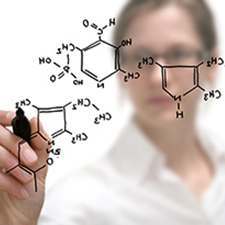
MenoClear™ is a breakthrough proprietary treatment that effectively combines the most powerful and extensively researched ingredients, giving you an all-in-one solution. Every single ingredient in MenoClear™ was hand-picked by a team of medical doctors and scientific researchers, based on clinical data and designed to help manage menopause symptoms and get results more effectively than any other menopause treatment available.
MenoClear™ contains 13 (for the day formula) and 10 (for the night formula) clinically-tested ingredients that meet the strength and purity standards of the USP/NF (United States Pharmacopeia–National Formulary). Each ingredient was carefully researched and included based on clinical data. No other non-prescription solution comes close to in terms of quality and purity of ingredients.
Recommended use for adults:
Day Formula - take 2 (two) capsules daily with meals. Capsules can be taken together in the morning with breakfast, or for optimal support, take 1 (one) in the morning and 1 (one) in the evening as a dietary supplement.
Night Formula - take 1 (one) capsule at night before bed as a dietary supplement.
MenoClear™ Day Time Formula Proprietary Blend of Ingredients:
Click here to see MenoClear™ Day label.
- Agri Res Svc: Dr. Duke's phytochemical and ethnobotanical databases. www.ars-grin.gov/duke
- Chatterjee A, Bagchi D, Yasmin T, Stohs SJ., Antimicrobial effects of antioxidants with and without clarithromycin on Helicobacter pylori. Mol Cell Biochem. 2005 Feb;270(1-2):125-30.
- Bagchi D, Das DK, Tosaki A, Bagchi M, Kothari SC. Benefits of resveratrol in women's health. Drugs Exp Clin Res. 2001;27(5-6):233-48.
- Sato M, Maulik G, Bagchi D, Das DK., Myocardial protection by protykin, a novel extract of trans-resveratrol and emodin. Free Radic Res. 2000 Feb;32(2):135-44.
- Jang M, Cai L, Udeani GO, et al. Cancer chemopreventive activity of resveratrol, a natural product derived from grapes. Science 1997;275:218-20.
- Hascalik S, Celik O, Turkoz Y, et al. Resveratrol, a red wine constituent polyphenol, protects from ischemia-reperfusion damage of the ovaries. Gynecol Obstet Invest 2004;57:218-23.
- Hwang D, Fischer NH, Jang BC, et al. Inhibition of the expression of inducible cyclooxygenase and proinflammatory cytokines by sesquiterpene lactones in macrophages correlates with the inhibition of MAP kinases. Biochem Biophys Res Commun 1996;226:810-8.
- Pervaiz S. Resveratrol: from grapevines to mammalian biology. FASEB J 2003;17:1975-85
- Opipari AW Jr, Tan L, Boitano AE, et al. Resveratrol-induced autophagocytosis in ovarian cancer cells. Cancer Res 2004;64:696-703.
- Scarlatti F, Sala G, Somenzi G, et al. Resveratrol induces growth inhibition and apoptosis in metastatic breast cancer cells via de novo ceramide signaling. FASEB J 2003;17:2339-41
- Kim YA, Choi BT, Lee YT, et al. Resveratrol inhibits cell proliferation and induces apoptosis of human breast carcinoma MCF-7 cells. Oncol Rep 2004;11:441-6.
- Li W, Seifert M, Xu Y, Hock B. Comparative study of estrogenic potencies of estradiol, tamoxifen, bisphenol-A and resveratrol with two in vitro bioassays. Environ Int 2004;30:329-35.
- Mokni M, Limam F, Elkahoui S, et al. Strong cardioprotective effect of resveratrol, a red wine polyphenol, on isolated rat hearts after ischemia/reperfusion injury. Arch Biochem Biophys 2007;457:1-6.
- Liske E, Hanggi W, Henneicke-von Zepelin HH, et al. Physiological investigation of a unique extract of black cohosh (Cimicifugae racemosae rhizoma): a 6-month clinical study demonstrates no systemic estrogenic effect. J Womens Health Gend Based Med 2002;11:163-74.
- Osmers R, Friede M, Liske E, et al. Efficacy and safety of isopropanolic black cohosh extract for climacteric symptoms. Obstet Gynecol 2005;105:1074-83
- Nappi RE, Malavasi B, Brundu B, Facchinetti F. Efficacy of Cimicifuga racemosa on climacteric complaints: a randomized study versus low-dose transdermal estradiol. Gynecol Endocrinol 2005;20:30-5.
- Frei-Kleiner S, Schaffner W, Rahlfs VW, et al. Cimicifuga racemosa dried ethanolic extract in menopausal disorders: a double-blind placebo-controlled clinical trial. Maturitas 2005;51:397-404.
- Uebelhack R, Blohmer JU, Graubaum HJ, et al. Black cohosh and St. John's wort for climacteric complaints: a randomized trial. Obstet Gynecol 2006;107(2 Pt 1):247-55.
- Liu J, Burdette JE, Xu H, et al. Evaluation of estrogenic activity of plant extracts for the potential treatment of menopausal symptoms. J Agric Food Chem 2001;49:2472-9.
- Burdette JE, Liu J, Chen SN, et al. Black cohosh acts as a mixed competitive ligand and partial agonist of the serotonin receptor. J Agric Food Chem 2003;51:5661-70.
- Ge X, Yanni S, Rennert G, et al. 3'3-diindolylmethane induces apoptosis in human cancer cells. Biochem Biophys Res Commun 1996;228:153-8.
- Balk JL. Indole-3-carbinol for cancer prevention. Altern Med Alert 2000; 3:105-7.
- Riby JE, Chang GHF, Firestone GL, Bjeldanes LF. Ligand-independent activation of estrogen receptor function by 3,3'-diindolylmethane in human breast cancer cells. Biochem Pharmacol 2000;60:167-77.
- Perfumi M, Mattioli L. Adaptogenic and central nervous system effects of single doses of 3% rosavin and 1% salidroside Rhodiola rosea L. extract in mice. Phytother Res 2007;21:37-43.
- Darbinyan V, Kteyan A, Panossian A, et al. Rhodiola rosea in stress induced fatigue - a double blind cross-over study of a standardized extract SHR-5 with a repeated low-dose regimen on the mental performance of healthy physicians during night duty. Phytomedicine 2000;7:365-71.
- Shevtsov VA, Zholus BI, Shervarly VI, et al. A randomized trial of two different doses of a SHR-5 Rhodiola rosea extract versus placebo and control of capacity for mental work. Phytomedicine 2003;10:95-105.
- Maslova LV, Kondrat'ev BI, Maslov LN, Lishmanov IB. [The cardioprotective and antiadrenergic activity of an extract of Rhodiola rosea in stress]. [Article in Russian]. Eksp Klin Farmakol 1994;57:61-3.
- Kim SH, Hyun SH, Choung SY. Antioxidative effects of Cinnamomi cassiae and Rhodiola rosea extracts in liver of diabetic mice. Biofactors 2006;26:209-19.
- Udintsev SN, Krylova SG, Fomina TI. [The enhancement of the efficacy of adriamycin by using hepatoprotectors of plant origin in metastases of Ehrlich's adenocarcinoma to the liver in mice]. [Article in Russian]. Vopr Onkol 1992;38:1217-22.
- Udintsev SN, Shakhov VP. [Changes in clonogenic properties of bone marrow and transplantable mice tumor cells during combined use of cyclophosphane and biological response modifiers of adaptogenic origin]. [Article in Russian]. Eksp Onko 1990;12:55-6.
- Kelly GS. Rhodiola rosea: a possible plant adaptogen. Altern Med Rev 2001;6:293-302.
- Darbinyan V, Kteyan A, Panossian A, et al. Rhodiola rosea in stress induced fatigue - a double blind cross-over study of a standardized extract SHR-5 with a repeated low-dose regimen on the mental performance of healthy physicians during night duty. Phytomedicine 2000;7:365-71.
- Newnham RE. Essentiality of boron for healthy bones and joints. Environ Health Perspect 1994;102:83-5.
- Food and Nutrition Board, Institute of Medicine. Dietary Reference Intakes for Vitamin A, Vitamin K, Arsenic, Boron, Chromium, Copper, Iodine, Iron, Manganese, Molybdenum, Nickel, Silicon, Vanadium, and Zinc. Washington, DC: National Academy Press, 2002.
- Shils M, Olson A, Shike M. Modern Nutrition in Health and Disease. 8th ed. Philadelphia, PA: Lea and Febiger, 1994.
- Penland JG. Dietary boron, brain function, and cognitive performance. Environ Health Perspect 1994;102:65-72.
- Vitamin E and heart disease. Pharmacist's Letter/Prescriber's Letter 2000;16(3):160307.
- Blumenthal RD, Lew W, Reising A, et al. Antioxidant vitamins reduce normal tissue toxicity induced by radio-immunotherapy. Int J Cancer 2000;86:276-80.
- Traber MG. Vitamin E. In: Shils ME, Shike M, Ross AC, Caballero B, Cousins RJ, eds. Modern Nutrition in Health and Disease. Philadelphia: Lippincott Williams & Wilkiins; 2006:396-411.
- Bruno RS, Leonard SW, Atkinson J, et al. Faster plasma vitamin E disappearance in smokers is normalized by vitamin C supplementation. Free Radic Biol Med. 2006;40(4):689-697.
- Ziaei S, Zakeri M, Kazemnejad A. A randomised controlled trial of vitamin E in the treatment of primary dysmenorrhoea. BJOG 2005;112:466-9.
- London RS, Murphy L, Kitlowski KE, Reynolds MA. Efficacy of alpha-tocopherol in the treatment of the premenstrual syndrome. J Reprod Med 1987;32:400-4.
- Wu D, Liu L, Meydani M, Meydani SN., Vitamin E increases production of vasodilator prostanoids in human aortic endothelial cells through opposing effects on cyclooxygenase-2 and phospholipase A2., J Nutr. 2005 Aug;135(8):1847-53.
- North American Menopause Society. Treatment of menopause-associated vasomotor symptoms: position statement of The North American Menopause Society. Menopause. 2004 Jan-Feb;11(1):11-33.
- Cherubini A, Zuliani G, Costantini F, et al. High vitamin E plasma levels and low low-density lipoprotein oxidation are associated with the absence of atherosclerosis in octogenarians. J Am Geriatr Soc. 2001;49(5):651-654.
- Gale CR, Ashurst HE, Powers HJ, Martyn CN. Antioxidant vitamin status and carotid atherosclerosis in the elderly. Am J Clin Nutr. 2001;74(3):402-408.
- McQuillan BM, Hung J, Beilby JP, Nidorf M, Thompson PL. Antioxidant vitamins and the risk of carotid atherosclerosis. The Perth Carotid Ultrasound Disease Assessment study (CUDAS). J Am Coll Cardiol. 2001;38(7):1788-1794
- Simon E, Gariepy J, Cogny A, Moatti N, Simon A, Paul JL. Erythrocyte, but not plasma, vitamin E concentration is associated with carotid intima-media thickening in asymptomatic men at risk for cardiovascular disease. Atherosclerosis. 2001;159(1):193-200
- Food and Nutrition Board, Institute of Medicine. Dietary Reference Intakes for Vitamin C, Vitamin E, Selenium, and Carotenoids. Washington, DC: National Academy Press, 2000. Available at: http://www.nap.edu/books/0309069351/html/.
- Brigelius-Flohe R, Kelly FJ, Salonen JT, et al. The European perspective on vitamin E: current knowledge and future research. Am J Clin Nutr 2002;76:703-16.
- Meydani SN, Leka LS, Fine BC, et al. Vitamin E and respiratory tract infections in elderly nursing home residents: a randomized controlled trial. JAMA. 2004;292(7):828-836.
- Barceloux DG. Zinc. J Toxicol Clin Toxicol 1999;37:279-92.
- Arens M, Travis S. Zinc salts inactivate clinical isolates of herpes simplex virus in vitro. J Clin Microbiol 2000;38:1758-62.
- Upton R, ed. Chaste Tree Fruit. American Herbal Pharmacopoeia and Therapeutic Compendium. Santa Cruz, CA; American Herbal Pharmacopoeia 2001:1-37.c
- Wuttke W, Jarry H, Christoffel V, et al. Chaste tree (Vitex agnus-castus)--pharmacology and clinical indications. Phytomedicine 2003;10:348-57.
- Meier B, Berger D, Hoberg E, et al. Pharmacological activities of Vitex agnus-castus extracts in vitro. Phytomedicine 2000;7:373-81.
- Jarry H, Leonhardt S., Gorkow C, Wuttke W. In vitro prolactin but not LH and FSH release is inhibited by compounds in extracts of Agnus Castus: direct evidence for a dopaminergic principle by the dopamine receptor assay. Exp Clin Endocrinol 1994;102:448-54.
- Atmaca M, Kumru S, Tezcan E. Fluoxetine versus Vitex agnus castus extract in the treatment of premenstrual dysphoric disorder. Hum Psychopharmacol 2003;18:191-5..
- Berger D, Schaffner W, Schrader E, et al. Efficacy of Vitex agnus castus L. extract Ze 440 in patients with premenstrual syndrome (PMS). Arch Gynecol Obstet 2000;264:150-3.
- Turner S, Mills S. A double-blind clinical trial on a herbal remedy for premenstrual syndrome: a case study. Complement Ther Med 1993;1:73-77.
- Prilepskaya VN, Ledina AV, Tagiyeva AV, Revazova FS. Vitex agnus castus: Successful treatment of moderate to severe premenstrual syndrome. Maturitas 2006;55 Suppl 1:S55-63.
- Lipovac M, Chedraui P, Gruenhut C, et al. Improvement of postmenopausal depressive and anxiety symptoms after treatment with isoflavones derived from red clover extracts. Maturitas 2010;65:258-61.
- van de Weijer PH, Barentsen R. hot flush symptoms compared with placebo, Maturitas, 2002 Jul 25;42(3):187-93.
- Hidalgo LA, Chedraui PA, Morocho N, Ross S, San Miguel G., The effect of red clover isoflavones on menopausal symptoms, lipids and vaginal cytology in menopausal women: a randomized, double-blind, placebo-controlled study. Gynecol Endocrinol. 2005 Nov;21(5):257-64.
- van de Weijer PH, Barentsen R. Isoflavones from red clover (Promensil) significantly reduce menopausal hot flush symptoms compared with placebo. Maturitas. 2002 Jul 25;42(3):187-93.
- Nelson HD, Vesco KK, Haney E, et al. Nonhormonal therapies for menopausal hot flashes: systematic review and meta-analysis. JAMA 2006;295:2057-71.
- Verhoeven MO, van der Mooren MJ, van de Weijer PH, et al. CuraTrial Research Group. Effect of a combination of isoflavones and Actaea racemosa Linnaeus on climacteric symptoms in healthy symptomatic perimenopausal women: a 12-week randomized, placebo-controlled, double-blind study. Menopause 2005;12:412-20.
- Evans M, Njike VY, Hoxley M, et al. Effect of soy isoflavone protein and soy lecithin on endothelial function in healthy postmenopausal women. Menopause 2007;14:141-9.
- Setchell KDR, Lydeking-Olsen E. Dietary phytoestrogens and their effect on bone: evidence from in vitro and in vivo, human observational, and dietary intervention studies. Am J Clin Nutr 2003;78:593S-609S.
- Crisafulli A, Marini H, Bitto A, et al. Effects of genistein on hot flushes in early postmenopausal women: a randomized, double-blind EPT- and placebo-controlled study. Menopause 2004;11:400-4.
- Huntley AL, Ernst E. Soy for the treatment of perimenopausal symptoms--a systematic review. Maturitas 2004;47:1-9.
- Kurzer M. Hormonal effects of soy isoflavones: Studies in premenopausal and postmenopausal women. J Nutr 2000;130:660-1.
- Taku K, Umegaki K, Sato Y, et al. Soy isoflavones lower serum total and LDL cholesterol in humans: a meta-analysis of 11 randomized controlled trials. Am J Clin Nutr 2007;85:1148-56.
- Tsai AC, Vinik AI, Lasichak A, Lo GS. Effects of soy polysaccharide on postprandial plasma glucose, insulin, glucagon, pancreatic polypeptide, somatostatin, and triglyceride in obese diabetic patients. Am J Clin Nutr 1987;45:596-601.
- Setchell KDR, Lydeking-Olsen E. Dietary phytoestrogens and their effect on bone: evidence from in vitro and in vivo, human observational, and dietary intervention studies. Am J Clin Nutr 2003;78:593S-609S.
- Chen YM, Ho SC, Lam SS, et al. Soy isoflavones have a favorable effect on bone loss in Chinese postmenopausal women with lower bone mass: a double-blind, randomized, controlled trial. J Clin Endocrinol Metab 2003;88:4740-7.
- Miyasaka LS, Atallah AN, Soares BG. Passiflora for anxiety disorder. Cochrane Database Syst Rev 2007;(1):CD004518
- Bourin M, Bougerol T, Guitton B, Broutin E. A combination of plant extracts in the treatment of outpatients with adjustment disorder with anxious mood: controlled study vs placebo. Fundam Clin Pharmacol 1997;11:127-32.
- Dhawan K, Kumar S, Sharma A. Anxiolytic activity of aerial and underground parts of Passiflora incarnata. Fitoterapia 2001;72:922-6.
- Dhawan K, Kumar S, Sharma A. Anti-anxiety studies on extracts of Passiflora incarnata Linneaus. J Ethnopharmacol 2001;78:165-70.
- Lemay A, Dodin S, Kadri N, et al. Flaxseed dietary supplement versus hormone replacement therapy in hypercholesterolemic menopausal women. Obstet Gynecol 2002;100:495-504.
- Dodin S, Lemay A, Jacques H, et al. The effects of flaxseed dietary supplement on lipid profile, bone mineral density, and symptoms in menopausal women: a randomized, double-blind, wheat germ placebo-controlled clinical trial. J Clin Endocrinol Metab 2005;90:1390-7
- Pan A, Demark-Wahnefried W, Ye X, et al. Effects of a flaxseed-derived lignan supplement on C-reactive protein, IL-6 and retinol-binding protein 4 in type 2 diabetic patients. Br J Nutr 2008;101:1145-9.
- Pan A, Sun J, Chen Y, et al. Effects of a flaxseed-derived lignan supplement in type 2 diabetic patients: a randomized, double-blind, cross-over trial. PLoS ONE 2007;2:e1148
- Eagon PK, Elm MS, Hunter DS, et al. Medicinal herbs: modulation of estrogen action. Era of Hope Mtg, Dept Defense; Breast Cancer Res Prog, Atlanta, GA 2000;Jun 8-11.
- Bone K, Mill S, eds. Principles and Practices of Phytotherapy, Modern Herbal Medicine. London: Churchill Livingstone; 2000.
- Carroll DG. Nonhormonal therapies for hot flashes in menopause. Am Fam Physician. 2006 Feb 1;73(3):457-64.
- Wu WH, Liu LY, Chung CJ, et al. Estrogenic effect of yam ingestion in healthy postmenopausal women. J Am Coll Nutr 2005;24:235-43.
- Komesaroff PA, Black CV, Cable V, Sudhir K.., Effects of wild yam extract on menopausal symptoms, lipids and sex hormones in healthy menopausal women., Climacteric. 2001 Jun;4(2):144-50.
- Eagon PK, Elm MS, Hunter DS, et al. Medicinal herbs: modulation of estrogen action. Era of Hope Mtg, Dept Defense; Breast Cancer Res Prog, Atlanta, GA 2000;Jun 8-11.
 Protykin® (Polygonum cuspidatum root) is a patented high potency 200:1 standardized Polygonum cuspidatum extract, supplying antioxidant benefits. Derived from the root of Polygonum cuspidatum, Protykin® may help support healthy aging. Protykin® has gone through a number of clinical studies and has been shown to be effective against H.pylori infections often associated with stomach ulcers. Other studies have indicated that Protykin® can have heart-protective qualities, particularly in women. The main ingredient in Protykin has also been shown to be a potent antioxidant, anti-inflammatory, and has anti-cancer activity. It appears to be a more potent anti-inflammatory than non-steroidal anti-inflammatory drug (NSAIDs) such as Aspirin, Ibuprofen, or Indomethacin. In animal studies, its main ingredient has been shown to kill off ovarian and breast cancer cells. It has also been shown to be a phytoestrogen and to have other potential benefits for cardiovascular health by lowering certain blood lipids (fats).
Protykin® (Polygonum cuspidatum root) is a patented high potency 200:1 standardized Polygonum cuspidatum extract, supplying antioxidant benefits. Derived from the root of Polygonum cuspidatum, Protykin® may help support healthy aging. Protykin® has gone through a number of clinical studies and has been shown to be effective against H.pylori infections often associated with stomach ulcers. Other studies have indicated that Protykin® can have heart-protective qualities, particularly in women. The main ingredient in Protykin has also been shown to be a potent antioxidant, anti-inflammatory, and has anti-cancer activity. It appears to be a more potent anti-inflammatory than non-steroidal anti-inflammatory drug (NSAIDs) such as Aspirin, Ibuprofen, or Indomethacin. In animal studies, its main ingredient has been shown to kill off ovarian and breast cancer cells. It has also been shown to be a phytoestrogen and to have other potential benefits for cardiovascular health by lowering certain blood lipids (fats).
 Black Cohosh (Cimicifuga Racemosa) has been used in traditional medicine to treat the hot flashes of menopause. A number of clinical studies have indicated that Black Cohosh, particularly in combination with other herbs, is also effective in minimizing the psychological symptoms as well. Black Cohosh is not a phytoestrogen but has estrogen-like effects. The improvement in psychological symptoms may be due to the effects on 5-HTP receptors.
Black Cohosh (Cimicifuga Racemosa) has been used in traditional medicine to treat the hot flashes of menopause. A number of clinical studies have indicated that Black Cohosh, particularly in combination with other herbs, is also effective in minimizing the psychological symptoms as well. Black Cohosh is not a phytoestrogen but has estrogen-like effects. The improvement in psychological symptoms may be due to the effects on 5-HTP receptors.
 DIM (Diidolylmethane) is the active metabolite of indole-3-carbinol, a component of cruciferous vegetables such as cabbage, broccoli, cauliflower and Brussels sprouts. Evidence suggests that DIM is the active cancer-protective agent in these cruciferous vegetables. DIM has both estrogen agonist and antagonist properties.
DIM (Diidolylmethane) is the active metabolite of indole-3-carbinol, a component of cruciferous vegetables such as cabbage, broccoli, cauliflower and Brussels sprouts. Evidence suggests that DIM is the active cancer-protective agent in these cruciferous vegetables. DIM has both estrogen agonist and antagonist properties.
 Rhodiola Rosea has traditionally been used as an adaptogen- a term used to describe herbs that aid in re-balancing the body and adapting to stress. Rhodiola has been used to maintain strength, stamina and cognitive abilities, including improving memory and concentration. Rhodiola, also known as roseroot, has also been shown to have protective effects on the heart, help control diabetes, aid and safeguard liver function and to minimize and prevent fatigue after stress.
Rhodiola Rosea has traditionally been used as an adaptogen- a term used to describe herbs that aid in re-balancing the body and adapting to stress. Rhodiola has been used to maintain strength, stamina and cognitive abilities, including improving memory and concentration. Rhodiola, also known as roseroot, has also been shown to have protective effects on the heart, help control diabetes, aid and safeguard liver function and to minimize and prevent fatigue after stress.
 Boron (Citrate) is a trace mineral thought to be important in bone health, in preventing and treating osteoarthritis and osteoporosis. Boron is also believed to play an important role in reproduction and development. Boron has been noted to increase estradiol levels in postmenopausal women who are taking estrogen replacements. There is also preliminary evidence that Boron supplementation may improve cognitive function. Other evidence indicates that Boron may help alleviate menopausal symptoms such as difficulties in concentration and short-term memory.
Boron (Citrate) is a trace mineral thought to be important in bone health, in preventing and treating osteoarthritis and osteoporosis. Boron is also believed to play an important role in reproduction and development. Boron has been noted to increase estradiol levels in postmenopausal women who are taking estrogen replacements. There is also preliminary evidence that Boron supplementation may improve cognitive function. Other evidence indicates that Boron may help alleviate menopausal symptoms such as difficulties in concentration and short-term memory.
 Tocopherol Acetate (Vitamin E) is one of the most important natural antioxidants. Antioxidants such as vitamin E prevent the damage caused by free radicals that are produced as natural by-products of biochemical reactions. If left unchecked, these free radicals cause damage to cells and tissues and can cause inflammation. For women's health, vitamin E has been shown to be important in treating menstrual problems such as PMS and the hot flashes often also associated with menopause. The North American Menopause Society has recommended the use of vitamin E for treating hot flashes. Other studies on heart health have shown that vitamin E may be very important in maintaining cardiovascular health. There is also scientific interest in vitamin E as a cancer preventive agent and as an important factor in the health of the nervous system. Vitamin E has also been found to boost certain arms of the immune system.
Tocopherol Acetate (Vitamin E) is one of the most important natural antioxidants. Antioxidants such as vitamin E prevent the damage caused by free radicals that are produced as natural by-products of biochemical reactions. If left unchecked, these free radicals cause damage to cells and tissues and can cause inflammation. For women's health, vitamin E has been shown to be important in treating menstrual problems such as PMS and the hot flashes often also associated with menopause. The North American Menopause Society has recommended the use of vitamin E for treating hot flashes. Other studies on heart health have shown that vitamin E may be very important in maintaining cardiovascular health. There is also scientific interest in vitamin E as a cancer preventive agent and as an important factor in the health of the nervous system. Vitamin E has also been found to boost certain arms of the immune system.
 Zinc (Amino Acid Chelate) is an essential trace metal and plays an important role in the structure of cells and proteins and in a healthy immune system. Zinc seems to play a particularly important role as an anti-viral substance. Zinc is absolutely required in a number of important enzyme reactions, particularly in antioxidant reactions. Zinc also plays an important role in regulating gene expression and cell signaling.
Zinc (Amino Acid Chelate) is an essential trace metal and plays an important role in the structure of cells and proteins and in a healthy immune system. Zinc seems to play a particularly important role as an anti-viral substance. Zinc is absolutely required in a number of important enzyme reactions, particularly in antioxidant reactions. Zinc also plays an important role in regulating gene expression and cell signaling.
 Chasteberry (Vitex angus-castus) has been used for centuries in Europe and Northern Africa to balance a woman's hormonal systems. The active substances are primarily the essentials oils and flavonoids. These substances help regulate the female hormonal system and some of the symptoms associated with perimenopause and PMS. Chasteberry does this by acting to suppress some hormones such as prolactin and mimicking other hormones such as estrogen and progesterone. Overall, Chasteberry acts to normalize the luteal phase of the menstrual cycle—the phase right before menstrual flow. Clinical studies using Chasteberry have shown it to be effective in relieving a number of symptoms common in perimenopause including breast tenderness, swelling, depression, irritability and insomnia.
Chasteberry (Vitex angus-castus) has been used for centuries in Europe and Northern Africa to balance a woman's hormonal systems. The active substances are primarily the essentials oils and flavonoids. These substances help regulate the female hormonal system and some of the symptoms associated with perimenopause and PMS. Chasteberry does this by acting to suppress some hormones such as prolactin and mimicking other hormones such as estrogen and progesterone. Overall, Chasteberry acts to normalize the luteal phase of the menstrual cycle—the phase right before menstrual flow. Clinical studies using Chasteberry have shown it to be effective in relieving a number of symptoms common in perimenopause including breast tenderness, swelling, depression, irritability and insomnia.
 Red Clover has a long history of use in relieving menopausal symptoms—and appears to be particularly useful in relieving the anxiety and depression that are so often associated with perimenopause and menopause. Red Clover has also been shown to be effective in a number of clinical studies in relieving hot flashes, breast tenderness, mood swings and night sweats. Red Clover contains substances that are metabolized in the body to genistein and daidzein, components found in soy products. These are believed to be responsible for decreasing hot flashes, reducing total cholesterol and blood lipid levels, and possibly protecting a woman's bones against osteoporosis.
Red Clover has a long history of use in relieving menopausal symptoms—and appears to be particularly useful in relieving the anxiety and depression that are so often associated with perimenopause and menopause. Red Clover has also been shown to be effective in a number of clinical studies in relieving hot flashes, breast tenderness, mood swings and night sweats. Red Clover contains substances that are metabolized in the body to genistein and daidzein, components found in soy products. These are believed to be responsible for decreasing hot flashes, reducing total cholesterol and blood lipid levels, and possibly protecting a woman's bones against osteoporosis.
 Soy Isoflavones are phytoestrogens and act to reduce hot flashes.The isoflavones are also effective in lowering cholesterol, control diabetes and reduce the chances of osteoporosis.
Soy Isoflavones are phytoestrogens and act to reduce hot flashes.The isoflavones are also effective in lowering cholesterol, control diabetes and reduce the chances of osteoporosis.
 Passion Flower (Passiflora) has been used as an anti-anxiety agent, an anti-depressant and a sleep-inducing agent.
Passion Flower (Passiflora) has been used as an anti-anxiety agent, an anti-depressant and a sleep-inducing agent.
 Soy Lignans are a type of phytoestrogen, that have been used to treat menopausal symptoms of hot flashes and night sweats. Lignans have also been shown effective in controlling diabetes and its associated inflammatory effects.
Soy Lignans are a type of phytoestrogen, that have been used to treat menopausal symptoms of hot flashes and night sweats. Lignans have also been shown effective in controlling diabetes and its associated inflammatory effects.
 Wild Yam contains diosgenin, a steroid precursor that has properties similar to estrogen and progesterone. Wild Yam has been used traditionally to treat postmenopausal vaginal dryness, hot flashes and hot flushes, infertility, osteoporosis and to increase energy levels and libido in both men and women. It has also been used to treat menstrual cramping and PMS. Post-menopausal women taking Wild Yam products have increased serum estrone, estradiol and sex hormone binding globulin. No significant side effects have been noted. Because Wild Yam may have estrogenic properties, women with a history of estrogen-sensitive breast cancers are cautioned to speak with their healthcare professional before using Wild Yam products.
Wild Yam contains diosgenin, a steroid precursor that has properties similar to estrogen and progesterone. Wild Yam has been used traditionally to treat postmenopausal vaginal dryness, hot flashes and hot flushes, infertility, osteoporosis and to increase energy levels and libido in both men and women. It has also been used to treat menstrual cramping and PMS. Post-menopausal women taking Wild Yam products have increased serum estrone, estradiol and sex hormone binding globulin. No significant side effects have been noted. Because Wild Yam may have estrogenic properties, women with a history of estrogen-sensitive breast cancers are cautioned to speak with their healthcare professional before using Wild Yam products.
MenoClear™ Night Time Formula Proprietary Blend of Ingredients:
Click here to see MenoClear™ Night label.
- Brzezinski A. Melatonin in humans. N Engl J Med 1997;336:186-95.
- Buscemi N, Vandermeer B, Hooton N, et al. The efficacy and safety of exogenous melatonin for primary sleep disorders. A meta-analysis. J Gen Intern Med 2005;20:1151-8.
- Haimov I, Lavie P, Laudon M, et al. Melatonin replacement therapy of elderly insomniacs. Sleep 1995;18:598-603.
- Garfinkel D, Laudon M, Nof D, Zisapel N. Improvement of sleep quality in elderly people by controlled-release melatonin. Lancet 1995;346:541-4.b
- Bellipanni G, Bianchi P, Pierpaoli W, et al. Effects of melatonin in perimenopausal and menopausal women: a randomized and placebo controlled study. Exp Gerontol 2001;36:297-310.
- Di Carlo G, Mascolo N, Izzo AA, Capasso F. Flavonoids: Old and new aspects of a class of natural therapeutic drugs. Life Sci 1999;65:337-53.
- Koyuncu H, Berkarda B, Baykut F, et al. Preventive effect of hesperidin against inflammation in CD-1 mouse skin caused by tumor promoter. Anticancer Res 1999;19:3237-41.
- Misra MC, Parshad R. Randomized clinical trial of micronized flavonoids in the early control of bleeding from acute internal haemorrhoids. Br J Surgery 2000;87:868-72.
- Craig W.J. Health-promoting properties of common herbs. Am J Clin Nutr 1999;70:491-9.
- Miyasaka LS, Atallah AN, Soares BG. Passiflora for anxiety disorder. Cochrane Database Syst Rev 2007;(1):CD004518
- Bourin M, Bougerol T, Guitton B, Broutin E. A combination of plant extracts in the treatment of outpatients with adjustment disorder with anxious mood: controlled study vs placebo. Fundam Clin Pharmacol 1997;11:127-32.
- Dhawan K, Kumar S, Sharma A. Anxiolytic activity of aerial and underground parts of Passiflora incarnata. Fitoterapia 2001;72:922-6.
- Dhawan K, Kumar S, Sharma A. Anti-anxiety studies on extracts of Passiflora incarnata Linneaus. J Ethnopharmacol 2001;78:165-70.
- FDA. Information paper on L-tryptophan and 5-hydroxy-L-tryptophan. Office of Nutritional Products, Labeling, Dietary Supplements. Center for Food Safety and Applied Nutrition. February 2001.
- Shaw K, Turner J, Del Mar C. Tryptophan and 5-hydroxytryptophan for depression. Cochrane Database Syst Rev 2002;(1):CD003198.
- Maevsky EI; Peskov AB; Uchitel ML; Pogorelov AG; Saharova NY; Vihlyantseva EF; Bogdanova LA; Kondrashova MN A succinate-based composition reverses menopausal symptoms without sex hormone replacement therapy. - Adv Gerontol - 01-JAN-2008; 21(2): 298-30
- Peskov AB; Maevskii EI; Uchitel' ML; Sakharova NY; Vize-Khripunova MA, Succinate-based preparation alleviates manifestations of the climacteric syndrome in women. Bull Exp Biol Med - 01-SEP-2005; 140(3): 312-4.
- TBC
- Besnt S, Patterson M, Garvin D. Valerian for sleep: a systematic review and meta-analysis. Alternative Therapies 2001;7:S4.
- Donath F, Quispe S, Diefenbach K, et al. Critical evaluation of the effect of valerian extract on sleep structure and sleep quality. Pharmacopsych 2000;33:47-53.
- Stevinson C, Ernst E. Valerian for insomnia: a systematic review of randomized clinical trials. Sleep Med 2000;1:91-9.
- Bryant RJ, Cadogan J, Weaver CM. The new dietary reference intakes for calcium: implications for osteoporosis. J Am Coll Nutr 1999;18:406S-412S.
- McGarry KA, Kiel DP. Postmenopausal osteoporosis. Strategies for preventing bone loss, avoiding fracture. Postgrad Med 2000;108:79-82,85-88, 91.
- Thys-Jacobs S, Starkey P, Bernstein D, Tian J. Calcium carbonate and the premenstrual syndrome: effects on premenstrual and menstrual symptoms. Premenstrual Syndrome Study Group. Am J Obstet Gynecol 1998;179:444-52.
- Covington TR, et al. Handbook of Nonprescription Drugs. 11th ed. Washington, DC: American Pharmaceutical Association, 1996.
- Swain R, Kaplan-Machlis B. Magnesium for the next millennium. South Med J 1999;92:1040-7.
- Facchinetti F, Borella P, Sances G, et al. Oral magnesium successfully relieves premenstrual mood changes. Obstet Gynecol 1991;78:177-81.
- Walker AF, De Souza MC, Vickers MF, et al. Magnesium supplementation alleviates premenstrual symptoms of fluid retention. J Womens Health 1998;7:1157-65.
- File SE, Fluck E, Fernandes C. Beneficial effects of glycine (bioglycin) on memory and attention in young and middle-aged adults. J Clin Psychopharmacol 1999;19:506-12..
- Baños G, Pérez-Torres I, El Hafidi M., Medicinal agents in the metabolic syndrome. diovasc Hematol Agents Med Chem. 2008 Oct;6(4):237-52.
- Mikalauskas S, Mikalauskiene L, Bruns H, Nickkholgh A, Hoffmann K, Longerich T, Strupas K, Büchler MW, Schemmer P. Dietary glycine protects from chemotherapy-induced hepatotoxicity. Amino Acids. 2011 Apr;40(4):1139-50
- Sekhar RV, McKay SV, Patel SG, Guthikonda AP, Reddy VT, Balasubramanyam A, Jahoor F. Glutathione synthesis is diminished in patients with uncontrolled diabetes and restored by dietary supplementation with cysteine and glycine. Diabetes Care. 2011 Jan;34(1):162-7.
 Melatonin is nature's "sleep hormone". It controls the normal sleep-wake cycle. It has been reported to help reduce the time to fall asleep and affect how long you stay asleep. Also, Melatonin has been found to be directly effective in reducing thyroid problems and changes in the female reproductive hormones in menopausal woman.
Melatonin is nature's "sleep hormone". It controls the normal sleep-wake cycle. It has been reported to help reduce the time to fall asleep and affect how long you stay asleep. Also, Melatonin has been found to be directly effective in reducing thyroid problems and changes in the female reproductive hormones in menopausal woman.
 Hesperidin (Methyl Chalcone) is a bioflavonoid derived from citrus fruit and is an anti-oxidant and an anti-inflammatory agent. Hesperidin also works to strengthen the blood vessels.
Hesperidin (Methyl Chalcone) is a bioflavonoid derived from citrus fruit and is an anti-oxidant and an anti-inflammatory agent. Hesperidin also works to strengthen the blood vessels.
 Passion Flower (Passiflora) has been used as an anti-anxiety agent, an anti-depressant and a sleep-inducing agent.
Passion Flower (Passiflora) has been used as an anti-anxiety agent, an anti-depressant and a sleep-inducing agent.
 5-HTP (Griffonia simplicifolia) Seed Extract is used to aid in sleep and combat feelings of depression. 5HTP has sedative properties; it should not be used with alcohol or any other sedatives unless under the care of a qualified healthcare professional.
5-HTP (Griffonia simplicifolia) Seed Extract is used to aid in sleep and combat feelings of depression. 5HTP has sedative properties; it should not be used with alcohol or any other sedatives unless under the care of a qualified healthcare professional.
 Ammonium Succinate is an Ammonium salt of Succinate. Animal studies and a small clinical study have indicated that ammonium succinate as the most concentrated ingredient effective in reducing symptoms of menopause including hot flashes, anxiety and headaches. Estradiol concentrations were increased in a number of women. Other studies from the same group also indicated positive responses, particularly in early perimenopause.
Ammonium Succinate is an Ammonium salt of Succinate. Animal studies and a small clinical study have indicated that ammonium succinate as the most concentrated ingredient effective in reducing symptoms of menopause including hot flashes, anxiety and headaches. Estradiol concentrations were increased in a number of women. Other studies from the same group also indicated positive responses, particularly in early perimenopause.
 Potassium (as Potassium Citrate) is potassium the salt of citric acid. There have been some studies that indicated that potassium was effective in reducing symptoms of menopause. Some of the symptoms included hot flashes, anxiety and headaches. Estradiol concentrations were reported to increase in a number of women. Other studies from the same group also indicated positive response, particularly in early perimenopause.
Potassium (as Potassium Citrate) is potassium the salt of citric acid. There have been some studies that indicated that potassium was effective in reducing symptoms of menopause. Some of the symptoms included hot flashes, anxiety and headaches. Estradiol concentrations were reported to increase in a number of women. Other studies from the same group also indicated positive response, particularly in early perimenopause.
 Valerian Root is a sedative and an anti-anxiety agent and is very effective in helping overcome insomnia and reducing the amount of time it takes to fall asleep. As Valerian has sedative properties, it should not be used with alcohol or any other sedatives unless under the care of a qualified healthcare professional.
Valerian Root is a sedative and an anti-anxiety agent and is very effective in helping overcome insomnia and reducing the amount of time it takes to fall asleep. As Valerian has sedative properties, it should not be used with alcohol or any other sedatives unless under the care of a qualified healthcare professional.
 Calcium helps to prevent bone loss and osteoporosis and is useful for alleviating a depressed mood as well.
Calcium helps to prevent bone loss and osteoporosis and is useful for alleviating a depressed mood as well.
 Magnesium (as Magnesium Oxide) is the most common positive ion in the body and is helpful for bones, nerves, muscles and is an important part of many reactions in the body. It is helpful in inducing restful sleep. Magnesium has also been used to reduce the mood changes associated with menopause, PMS and the headaches often associated with both.
Magnesium (as Magnesium Oxide) is the most common positive ion in the body and is helpful for bones, nerves, muscles and is an important part of many reactions in the body. It is helpful in inducing restful sleep. Magnesium has also been used to reduce the mood changes associated with menopause, PMS and the headaches often associated with both.
 Glycine is an amino acid—one of the protein "building blocks". It is believed to be particularly important in improving memory and clear thinking. It binds to certain brain receptors thought to be part of the memory and learning process. Glycine also acts to lower blood pressure naturally and to protect the liver. Glycine may also be important in restoring the antioxidant glutathione, particularly in women with pre-diabetes, diabetes and metabolic syndrome.
Glycine is an amino acid—one of the protein "building blocks". It is believed to be particularly important in improving memory and clear thinking. It binds to certain brain receptors thought to be part of the memory and learning process. Glycine also acts to lower blood pressure naturally and to protect the liver. Glycine may also be important in restoring the antioxidant glutathione, particularly in women with pre-diabetes, diabetes and metabolic syndrome.







